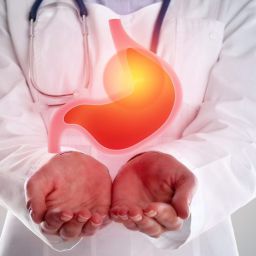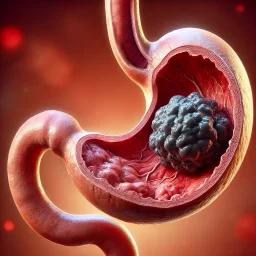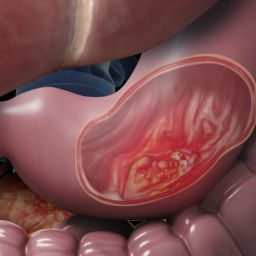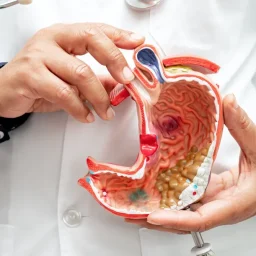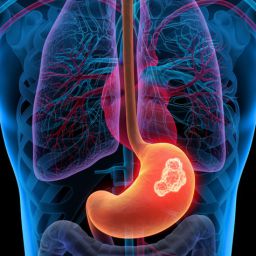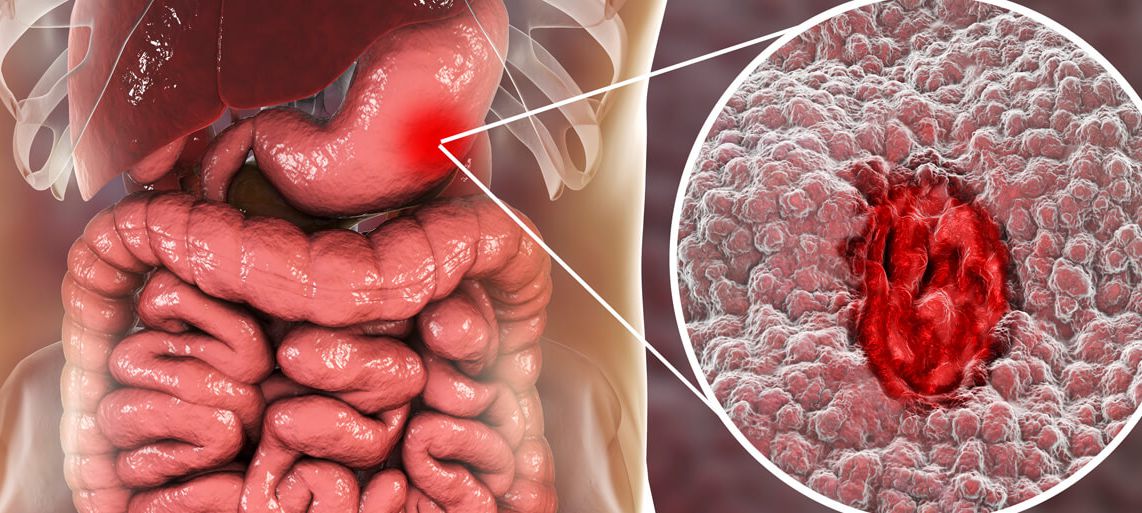
Introduction to Stomach Cancer
Stomach cancer develops when abnormal cells in the stomach lining begin to grow uncontrollably. These cells can form a mass or tumor and spread to other parts of the body. The stomach, as a major organ involved in digestion, consists of several layers and regions, which means that stomach cancer can originate in various areas and types of cells. The type of cancer that develops depends on the cells affected, the location within the stomach, and the rate at which the cancer cells grow and spread.
Stomach cancer is often diagnosed in the later stages because its early symptoms are vague and can be easily mistaken for other common gastrointestinal issues such as indigestion or ulcers. As such, understanding the various types of stomach cancer is essential for both prevention and early diagnosis.
Major Types of Stomach Cancer
Stomach cancer is categorized into several types based on the cells that are affected and the area of the stomach where the cancer originates. Some of the most common types include adenocarcinoma, lymphoma, gastrointestinal stromal tumors (GISTs), and neuroendocrine tumors. Let’s take a closer look at each of these major types:
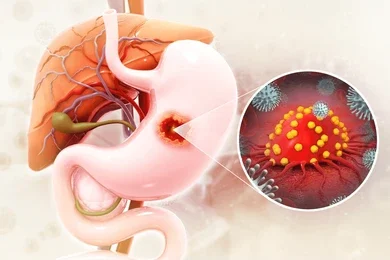
1. Adenocarcinoma
Adenocarcinoma is by far the most common type of stomach cancer, accounting for about 90-95% of all cases. It starts in the glandular cells of the stomach lining, which are responsible for producing digestive juices. These cells, when affected by mutations or abnormalities, can grow uncontrollably, forming a tumor.
Characteristics:
- Adenocarcinoma usually starts in the mucus-producing cells in the inner lining of the stomach.
- It can occur in any part of the stomach, though it most commonly affects the distal portion, which is the lower part of the stomach.
- It can spread to nearby lymph nodes and other organs such as the liver, lungs, and peritoneum (the lining of the abdominal cavity).
Symptoms:
- Abdominal pain or discomfort
- Loss of appetite
- Unexplained weight loss
- Nausea and vomiting
- Bloating after eating
- Blood in stool or vomit
Risk Factors:
- A family history of stomach cancer
- Chronic infection with Helicobacter pylori (a bacterium that can cause ulcers)
- Smoking
- Poor diet, especially one low in fruits and vegetables
- A history of stomach surgery or gastritis
Treatment: Treatment for adenocarcinoma depends on the stage at diagnosis. In early stages, surgery to remove the tumor may be possible. However, in more advanced cases, a combination of chemotherapy, radiation therapy, and targeted therapies may be used. Immunotherapy, which stimulates the immune system to fight cancer, is also being explored as a treatment option.
2. Lymphoma
Lymphoma is a cancer that begins in the lymphatic tissue. The stomach contains lymphoid tissue, which is part of the immune system, and in some cases, lymphoma can develop in the stomach. This type of stomach cancer is relatively rare but can be aggressive when it does occur.
Characteristics:
- Lymphoma of the stomach is usually a type of non-Hodgkin lymphoma (NHL).
- It tends to be more localized compared to adenocarcinoma, often involving lymphoid tissues in the stomach.
- The tumor may develop in the mucosa-associated lymphoid tissue (MALT), a specific type of tissue that helps protect the stomach lining from infection.
Symptoms:
- Abdominal pain or fullness
- Weight loss
- Nausea
- Vomiting
- Anemia (low red blood cell count)
Risk Factors:
- Chronic Helicobacter pylori infection
- Weakened immune system, such as in people with HIV/AIDS or those who have had an organ transplant
- Certain autoimmune diseases
Treatment: Treatment for stomach lymphoma typically involves chemotherapy and radiation. In some cases, if H. pylori infection is present, eradicating the bacteria with antibiotics may lead to remission. In localized cases, surgical removal of the tumor may also be considered.
3. Gastrointestinal Stromal Tumors (GISTs)
Gastrointestinal stromal tumors (GISTs) are rare cancers that arise from the interstitial cells of Cajal, which are responsible for regulating the muscle contractions of the stomach and intestines. While GISTs can occur in any part of the gastrointestinal tract, they are most commonly found in the stomach.
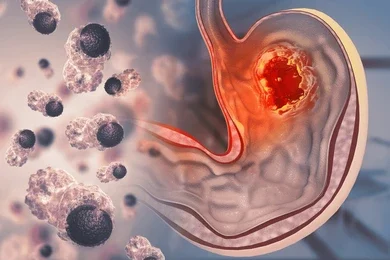
Characteristics:
- GISTs are soft tissue tumors that often begin in the stomach’s muscle layers.
- They may be benign (non-cancerous) or malignant (cancerous), and while benign GISTs may not cause problems, malignant ones can grow and spread to other parts of the body.
- The tumor may be either slow-growing or aggressive, depending on the characteristics of the specific tumor.
Symptoms:
- Abdominal pain or discomfort
- Gastrointestinal bleeding (which may lead to blood in the stool or vomit)
- Unexplained weight loss
- A palpable mass in the abdomen (in some cases)
Risk Factors:
- Genetic conditions such as neurofibromatosis type 1 (NF1)
- Family history of GISTs
- Mutations in the KIT gene or PDGFRA gene
Treatment: Surgical removal of GISTs is the most common treatment approach, particularly for tumors that are localized. In cases where the cancer has spread or is considered high-risk, targeted therapies such as imatinib (Gleevec) may be used to slow or stop the growth of the tumor.
4. Neuroendocrine Tumors (NETs)
Neuroendocrine tumors of the stomach are relatively rare and arise from the hormone-producing cells in the stomach lining. These tumors can vary greatly in behavior, with some being slow-growing and others being highly aggressive.
Characteristics:
- NETs of the stomach can be classified as carcinoid tumors, which are slow-growing tumors that arise from neuroendocrine cells.
- They often develop in the lower part of the stomach and can lead to changes in hormone production.
- These tumors are typically small but can spread to other parts of the body if not detected early.
Symptoms:
- Abdominal pain or bloating
- Diarrhea
- Skin flushing or sweating (due to hormone secretion)
- Weight loss
- Anemia
Risk Factors:
- Chronic Helicobacter pylori infection
- Family history of other neuroendocrine tumors
- Certain genetic conditions, such as multiple endocrine neoplasia (MEN)
Treatment: Treatment for neuroendocrine tumors often involves surgery to remove the tumor. If the cancer has spread, targeted therapy and chemotherapy may be used. In some cases, hormone therapy or somatostatin analogs may be prescribed to manage hormone-related symptoms.
Other Rare Types of Stomach Cancer
In addition to the four primary types of stomach cancer, there are several other rare forms that can occur in the stomach. These include:
- Carcinosarcoma: A rare and aggressive type of stomach cancer that contains both cancerous epithelial and mesenchymal (connective tissue) cells.
- Signet Ring Cell Carcinoma: A subtype of adenocarcinoma, which is characterized by cells that appear to have a “signet ring” shape under the microscope. This form is known for being aggressive and spreading quickly.
- Small Cell Carcinoma: A rare type of cancer that resembles small cell lung cancer and is typically aggressive, often diagnosed at an advanced stage.
Diagnosing Stomach Cancer
The diagnosis of stomach cancer typically involves a combination of medical imaging, endoscopy, biopsy, and laboratory tests. The methods used may vary depending on the type of cancer suspected. For instance:
- Endoscopy involves using a thin, flexible tube to examine the stomach lining and take tissue samples.
- Imaging tests such as CT scans, ultrasounds, and PET scans help assess the extent of the cancer’s spread.
- Biopsy confirms the presence of cancer by analyzing tissue samples in a laboratory.
Stomach cancer is a diverse disease, and the treatment approach largely depends on the type of cancer diagnosed. While adenocarcinoma is the most common form, other types such as lymphoma, gastrointestinal stromal tumors, and neuroendocrine tumors present their own unique challenges and treatment options. Early detection and diagnosis are key to successful treatment outcomes. Each type of stomach cancer requires a tailored approach, including surgery, chemotherapy, radiation therapy, or targeted treatments, depending on the specific cancer type and its stage.
If you experience any symptoms related to stomach cancer, such as unexplained weight loss, persistent abdominal pain, or nausea, it is essential to consult a healthcare provider immediately for a thorough evaluation and potential screening. With advancements in cancer treatment, there are more options than ever for managing and overcoming stomach cancer.

